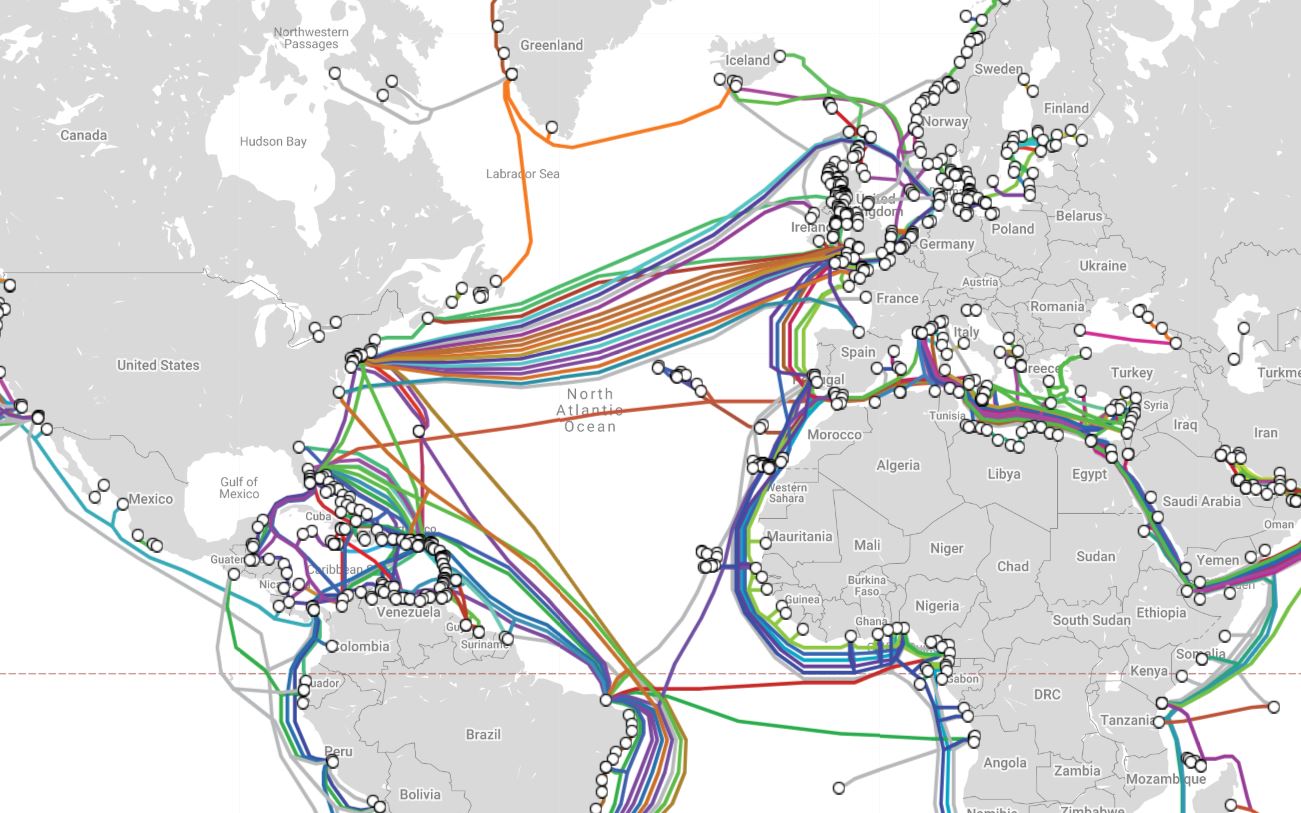Coronavirus is Making the Internet Stronger, MIT Claims
Coronavirus outbreak forces companies and ISPs to upgrade quickly

Internet service providers and large tech companies like Netflix are working together to perhaps permanently strengthen internet connections in the face of increased usage due to the coronavirus pandemic, a new investigation from the MIT Technology Review claims.
The investigation begins by showing data about how the coronavirus pandemic has drastically increased internet usage. According to Cloudflare, recent internet activity has increased by around a quarter in many major cities as workers continue to shift from offices to homes.
For both personal and business use, video calls are up, with more people using Zoom in the first two months of 2020 than all of 2019. Home entertainment is also on the rise, with last weekend’s Steam player count rating 25% larger at 24 million consecutive players than the same weekend last month. Certain areas are impacted even harder, with Cloudflare showing a 40% usage increase in Italy specifically. Meanwhile, as Tom's Hardware has reported, the hardware to use these online services is selling out globally. So, the Review then asks, how is the internet responding to this increased strain?
Better than you’d expect, although you might not see it at home right away. Let’s start with some expected downturns.
With so many users now working on home connections instead of in centralized locations, connection monitoring organizations like RIPE and Ookla are showing minor slowdowns in certain areas, as home connections often operate on outdated television cables meant only to receive information rather than send it out. This also affects companies like Dropbox negatively, as it’s much easier to manage masses of users connecting from one location as opposed to many separate ones.
Additionally, companies like YouTube and Netflix are lowering video quality to preserve bandwidth, and video game companies like Valve and Sony are adjusting their updates to download when it’s not peak hours.
“Anecdotally, the internet is struggling to keep up with the shift,” Matthew Roughan told the MIT Technology Review. A professor at the University of Adelaide in Australia, Roughan leads a mapping project called the Internet Topology Zoo. “You tend to hear bad news stories at the moment.”
Get Tom's Hardware's best news and in-depth reviews, straight to your inbox.
However, and this is where news starts to pick up, University of Wisconsin-Madison professor Paul Barford, who runs a similar project, told the publication that this local disruption doesn’t reflect the internet as a whole. “That’s the whole point of a distributed network,” he explained.
Moving into positives, RIPE seems to agree, with its national network delay charts for one month prior to quarantine and its current charts looking relatively the same across countries. For instance, Comcast connections for one month prior to lockdown in the United States show a general median delay time of around 70 ms for both February and April, with minor fluctuations across each. BSKYB-Broadband connections for the same time periods in the UK also each rest around 20 ms.
Meanwhile, Cloudflare CEO Matthew Prince says that video service throttling isn’t a sign of degrading connection. Netflix and YouTube “Volunteering to do this in advance of any problem shows they’re good internet citizens,” he tells MIT Technology Review. The university publication states that these precautions are “just-in-case.”
So, large scale operations are relatively on par with pre-pandemic procedure. But it gets better, the university publication states.
This is because, even if delays aren’t as bad as anecdotal evidence would have you believe, corporations are shifting resources to adjust for them regardless. “In fact, far from bringing networks to their knees, COVID-19 is driving the most rapid expansion in years,” writes the MIT Technology Review. Here, they cite companies like Equinox and Netflix rushing out upgrades to their 200 global data centers, as well as Zoom’s recent partnerships with local broadband providers.
“Equinox is in the middle of upgrading its traffic capacity from 10 to 100 gigabytes,” the university publication states. “The work was going to have been carried out over a year or two- but it is now being done in a few weeks.” Meanwhile, the article reports that Netflix vice president of network and systems infrastructure is now looking into installing hundreds of extra servers to supplement its usage in the second and third biggest hubs of each region where it operates, and Zoom is apparently “monitoring where most of its traffic comes from and partnering with broadband providers in those locations to set up dedicated connections.”
I couldn’t find precise data elsewhere to back these claims, though a recent article from Data Center Knowledge does refer to a Kentik webinar yesterday where Zoom and Netflix’s infrastructure leads each spoke candidly about how the two companies are approaching quarantine. Both companies’ representatives said that they were looking to get more servers into ISP locations, while also upping Equinox and AWS cloud bandwidth by allocating extra capacity to users. In particular, Zoom senior manager of SaaS operations Alex Guerrero reportedly explained that the company usually keeps 50 percent more capacity on its network than its actual maximum usage, meaning that it is well prepared for cloud expansion, while it is currently peering with ISPs in order to be “as close to the customer as possible.”
While Tom’s Hardware wasn’t on this call, it’s possible that this is where the MIT Technology Review is getting much of its information.
On the ISP front, Comcast waived data caps halfway through last month, with publications like TechCrunch and Ars Technica using the opportunity to track how each network’s performance has maintained stability after the lift and call for the change to be permanent. Meanwhile, the South African government announced in mid-February that it is working to allow carriers to roll out cheap or even free data plans for mobile, as other broadband infrastructure doesn’t exist in many parts of the country.
The MIT Technology Review's hope here is that, even after the pandemic subsides, these upgrades will remain. In that case, coronavirus will have spurred ISPs and other large netizens into action in a way that might not have happened otherwise.
“The internet was built for this,” Prince told the publication.
The squeaky wheel gets the grease.
Michelle Ehrhardt is an editor at Tom's Hardware. She's been following tech since her family got a Gateway running Windows 95, and is now on her third custom-built system. Her work has been published in publications like Paste, The Atlantic, and Kill Screen, just to name a few. She also holds a master's degree in game design from NYU.
-
2Be_or_Not2Be What all of these individuals fails to emphasize is how congested the local "last-mile" connections are becoming now. Sure, the cable ISP (like Comcast, etc.) has enough bandwidth in its hubs/data centers, but the low-end upload your whole neighborhood is sharing is become much more congested. That affects video-conferencing, gaming, teleworking, and other items that have the need for better upload speeds vs just download only (like web pages). The stay-at-home situation is causing more types of connections to be made from home, and it's really showing how little improvement is going into the last-mile connection.Reply
So if you claim the Internet providers have enough bandwidth for all, then cable providers especially need to improve the last-mile connections. Everyone should want FTTH (fiber to the home), whether that is cable providers with a hybrid fiber/coax solution, upgrading multi-tenant buildings with fiber, rural providers, or the like. Then we would all feel more confident in our capability to operate from home, and that Internet traffic isn't an issue.
